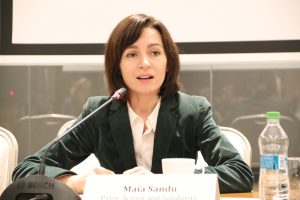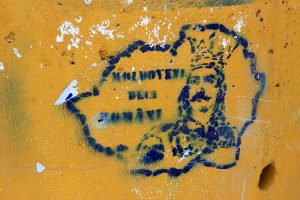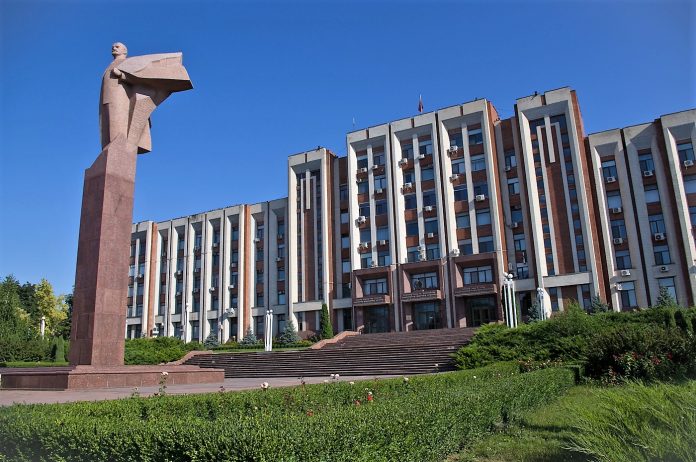The recent bombings in Transnistrian cities, an area that has been a predominantly Russian protectorate since 1990, have been interpreted as a provocative attempt by Moscow to involve its regime in the Ukraine war. The unrecognized “Moldovan Republic of Transnistria” is part of Moldova’s territory, as recognized by the UN, and its involvement would endanger Moldova itself.
Director of National Intelligence Avril Haines told U.S. senators on 10 May: “We assess President Putin is preparing for prolonged conflict in Ukraine during which he still intends to achieve goals beyond the Donbas.”
But behind these provocations, Moscow also aims to cause political destabilization in Romania, fomenting nationalist and expansionist tendencies in the country.
Provocation
On April 25 and 26, three explosions occurred in the capital of the Republic of Transnistria, Tiraspol, and another in a nearby village. The regime said it had bombed the Ministry of State Security in the capital, two Russian television broadcast antennas, and a village hosting a large weapons depot.
No casualties were reported. The general impression was that the authorities had prepared and evacuated the areas from officials and pedestrians.
A few days before, a Russian official, Rustam Minnekayev, stated that Russia was aiming for full control of southern Ukraine to secure access to Transnistria.
In addition, strange messages reached the cell phones of many Transnistrian residents – allegedly by the Ukrainian military authorities – urging them to leave the country in view of the Ukrainian bombing.
Earlier, Ukrainian secret services had warned of imminent Russian provocations against Moldova and the Russian-occupied and separatist region. They had intercepted a letter from the Secretary of the State Committee for Critical Situations of the Transnistrian Republic Vadym Shmalenko to the head of the Camenca region, Vladimir Bychkov, dated 22 April, asking him for instructions on the impending attacks.
Three days before the attacks, the authorities knew!
The U.S. military has also warned of imminent Russian provocations in neighbouring Ukraine to justify a new invasion.
The local government did not doubt that the Ukrainian government was responsible for the attacks.
On April 26, the Russian state news agency RIA Novosti reported on the events and hosted statements by the co-commander of the “Russian peacekeeping force”, according to which the Transnistrian leadership “will soon take decisions to defend the interests” of the country.
Given the same rhetoric was used in the case of Ukraine, these statements were interpreted as a preparation for a southern attack on Ukraine. This position was reinforced by the order to put on “full combat readiness” the troops in the area, 5000 local militiamen, and about 3000 Russian soldiers.
In turn, Russian Deputy Foreign Minister Andrey Rudenko was quick to voice Moscow’s concern about the attacks and said the Kremlin did not want to consider Transnistrian involvement in the war.
The news of the bombings and the messages were transmitted by the Russian media as well as the pro-Russian ones in the West.
The Moldovan government has described the attacks as “a cause for tension”. President Maia Sandu attributed the events to a clash between factions and efforts to destabilize the region.

President of Moldova Maia Sandu [FLICKR/OSCE PARLIAMENTARY ASSEMBLY/CC BY-SA 2.0]
Another Russian protectorate
The “Moldovan Republic of Transnistria” was the result of separatist actions by its Russian-speaking population – with Russian military support in mercenaries and army – beginning in 1990. In the ongoing war between Russian-speaking militias and Moldovan troops in 1992 about 700 people had been killed. Since then, the Russian military has remained in the country as a “peacekeeping force.”
However, the Russians do not constitute the majority of the population of 470 thousand. Only 29-30% of the population are Russians, while Moldovans and Ukrainians make up 28.6% and 22.9% respectively. That is, the illegal occupation of the territory recognized by the UN as the territory of Moldova is done by one-third of its population.
On April 26, the Romanian service of the German Deutsche Welle stated that “Russia… could at any time recognize the breakaway region… and then intervene militarily, as it had already done with Luhansk and Donetsk and the invasion of February 24, 2022. And as he did in 2008 when he attacked Georgia.”
Fears of Transnistrian involvement in Vladimir Putin‘s war plans are certainly not unfounded.
However, it is hard to think that in his immediate plans is the invasion of Moldova. At least not now. Although the country has stated in every way that it does not look forward to NATO membership and remains neutral, it has already received significant financial assistance from the US to strengthen its defence. A Russian invasion would create a wave of support inside Romania that would push the government for an immediate military response. Putin wants such destabilization but his staff understands the dangers of a military engagement.
Of course, we cannot ignore the fact that Putin’s future depends on the outcome of the invasion of Ukraine. And, no matter how much he hides from the Russian public his enormous defeat, he faces the risk of being overthrown by the other partners of his regime.
Putin remains the main problem in the current crisis.
As the authoritative Italian newspaper La Stampa wrote on April 27, “the only way to prevent escalation – both inside Ukraine and outside its borders – is to stop Putin.”
Romania and Moldova
When Moldova gained its independence in 1991, nationalist voices in Romania called for its annexation as the country’s historic territory. The question of the unity of the two countries is still in the political debate in both Bucharest and Chisinau. His supporters belong mainly to the far-right but after the Russian invasion, the voices in favour of the union increased.
Romanian irredentism was expressed politically by the Greater Romania Party founded in 1991 by Corneliu Vadim Tudor, also known as the Romanian Le Pen. The far-right party participated in the government of Nicolae Văcăroiu from 1993 to 1995 and in the 2000 elections came in second with two million votes. The country’s European course limited its influence and in 2019 it had disappeared politically.
The Alliance for the Union of Romanians (AUR), a far-right party that operates in both countries claims the legacy of the Iron Guard, a fascist movement, which became known as the Legion of the Archangel Michael and is responsible for the massacres of Jews and communists in 1930s. The Alliance has in its program the entire “arsenal” of the far-right, including the fight against vaccines. In the last Romanian elections in September 2019, he won 13 seats out of 136 in the Senate and 28 out of 330 in Parliament. On the contrary, in the elections held in Moldova in July 2021, its presence was insignificant.

Graffiti with shapes of Greater Romania near Briceni, Moldova. The portrait is of Stephen the Great, a national hero in both countries. [CC BY-SA 3.0]
Polls conducted in Romania after the Russian invasion show that 11% of respondents want immediate union with Moldova. In Moldova, the latest polls suggest 44% are in favour of the union.
Following the Russian invasion, Romanian intellectuals, journalists, and artists from different political circles argued that the union would protect Moldova from a possible Russian invasion, as the country would become an indirect member of the EU and NATO.
Well-known journalist Ștefan Vlaston of the center-right newspaper Adevărul wrote on April 26 that “unification should have been done a long time ago, but the desire of the Moldovans and their leaders for a sovereign, independent state was very clear. But now, we are in an extreme situation… The territory of Moldova could become part of a NATO member state and NATO military forces could enter without delay to protect it. A surreal scenario without a doubt. But otherwise, we can see the same atrocities that caused horror around the world in Mariupol and Boucha.”
The issue, however, is not simple, and broadening the debate could lead to a rise in nationalism and destabilise Romania’s political life.
If in 1991 the union between the two countries could seem possible, something the Moldovans did not want in any way. Today it is practically impossible. Romania is a member of the EU and NATO. There is no room for manoeuvres on an issue that would change Europe’s borders. Promoting the union’s slogan essentially facilitates Putin’s policy of weakening and destabilising European countries.
More responsible voices, such as that of Moldovan President Maia Sandu, point out that the answer to such a question can only be given by the Moldovan people. Prime Minister Natalia Gavrilița recently stressed that such a thing is not on the agenda.

